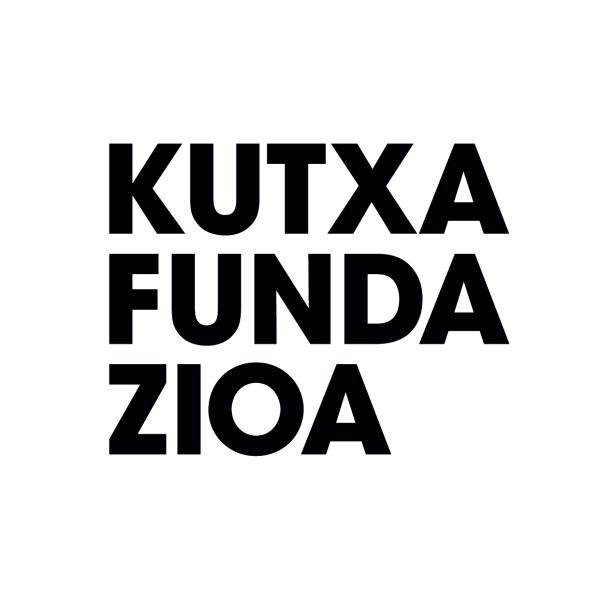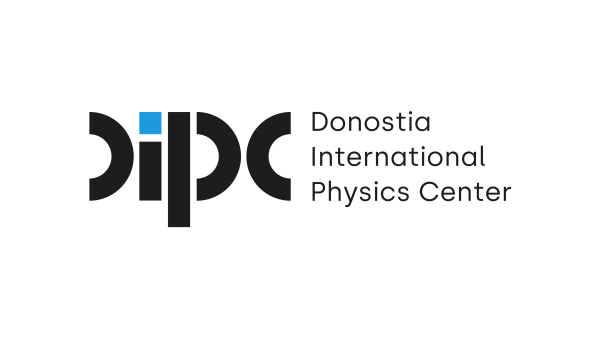Energy talks and workshop – green hydrogen in Donostia
‘Energy talks’ and workshop event addresses the main challenges of green hydrogen in Donostia / San Sebastian
- The National network CAT&SCALE and the European consortium ANEMEL, in collaboration with the University of the Basque Country (UPV/EHU) and the Materials Physics Center (CFM), will offer the keys to the energy transition through talks given by expert scientists and a roundtable discussion.
ENERGY TALKS
March 21, 18:30
Aquarium Donostia /San Sebastián
Public: general
Free entrance until full capacity is reached
ENERGY WORKSHOP
March 22, 16:00
Eureka! Zientzia Museoa
Public: Kids ages 4-10
SIGN UP HERE
Moving away from dependence on fossil fuels is a major challenge for today’s society to minimise the impact the climate crisis. The European Union is therefore pursuing several initiatives focused on developing a green and equitable energy transition, one of which concerns hydrogen as an energy vector. All these issues will be discussed at the ENERGIA Talks, which will take place on Friday 21 March at the Donostia Aquarium, in San Sebastian. From 18:30, a series of lectures will be held by experts from CAT&SCALE, a national network that explores novel scientific and technological solutions to convert renewable electricity into green fuels, and ANEMEL, a European consortium to produce clean hydrogen from dirty waters. On the 22nd, another activity will take place, this time aimed at the youngest audience: from 16.00, children aged 4 to 10 can take part in ENERGIA txiki, a science and culture workshop organized by CAT&SCALE, UPV/EHU, AEMEL and CFM at the Eureka! Zientzia Museoa, where they will learn about the wonders of water as a source of life and, of course, energy.
About the speakers
The ‘Energy talks’ will feature three scientists with extensive hydrogen background knowledge:
Pau Farrás
Coordinator of the ANEMEL consortium and researcher at University of Galway, Ireland.
Pau is an Associate Professor in Inorganic Chemistry at the University of Galway. He received his BSc in Chemical Engineering from the Autonomous University of Barcelona and obtained the PhD in Chemistry from the Materials Science Institute of Barcelona.
The ChemLight group focuses on the preparation of molecules and materials capable to drive renewable (light-)driven reactions for the production of fuels and chemicals. The research topics span from metal nanoparticles for water splitting to photoactive porous materials for photocatalytic applications. Pau is an ambassador of the European Innovation Council, he leads several EU projects, sits in the technical advisory committee of Grupo Bimbo, he is an advisory board member of Research Ireland project HyLIGHT and co-director of Green Renewable Technologies Ltd.
Núria López
Group leader at the CAT&SCALE network and researcher at the Institut Català d’Investigació Química – ICIQ, based in Tarragona.
Núria López obtained her BSC Chemistry (1995) and her Ph.D. degree in Theoretical Chemistry at the University of Barcelona, Spain (1999). Then she joined the Center for Atomic-scale Materials Physics led by Prof. Jens K. Nørskov (Denmark) as post-doctoral researcher. In 2005 she started her independent career at ICIQ. Her research group focuses on the study heterogeneous photo-electro-catalysis from a theoretical standpoint. In 2010 she was awarded an ERC Starting Grant (2010) and then a ERC Proof-of-concept (2015) by the European Research Council. She was awarded a “Prize for Excellence” by the Real Sociedad Española de Química in 2015 and participated in the consortium that won the RSC’s 2022 John Jeyes Award for sustainability. She has collaborated with several industries in Europe to leverage atomistic modelling, participated in more than 10 EU projects, and served in several committees in the European Union, including the most important supercomputing initiatives in Europe (being Chair of PRACE‘s Steering Committee and INFRAG (EuroHPC-JU)).
Prof. López has an h impact of 85, has published over 300 published articles. She is a pioneer in the introduction of open data practices via ioChem-BD, the computational catalysis database developed at ICIQ.
Sara Barja
Coordinator of the CAT&SCALE network and researcher at University of the Basque Country (UPV/EHU).
Sara Barja Martínez is an Ikerbasque Research Associate Professor at the University of the Basque Country (UPV/EHU) and the Materials Physics Center (CFM). Her research in (electro)catalysis explores the relationship between structure and reactivity using scanning microscopy and in situ and operando spectroscopy, with applications in sustainable catalytic materials.
She obtained her PhD in Physics from the Autonomous University of Madrid (2012) and, in 2013, was awarded a European MSCA project for postdoctoral studies at the Lawrence Berkeley National Laboratory (USA) and the Max Planck Institute for Solid State Research (Germany). She joined UPV/EHU in 2016 as an Ikerbasque Research Fellow and later as a Ramón y Cajal researcher. In 2021, she received an ERC Starting Grant for the COSAS project, which focuses on developing new materials for hydrogen production from seawater.
Committed to science outreach, she participates in events such as Naukas, Qué sabemos de…?, and TEDx. She has received awards such as the Hipatia Award for Young Talent in Science and the RSEQ Young Talents in Electrochemistry Award, as well as recognitions from the Basque Government and Ikerbasque. Since 2024, she has been a corresponding young member of Jakiunde.
After the presentations by these scientists, a round table discussion will begin.
An asset for Europe’s economy
Hydrogen is the first element in the periodic table. It is the lightest of all elements, yet its importance in the European economy is growing. It is abundant on our planet, but it is almost always found in association with other elements. Water, for example, consists of hydrogen and oxygen. To obtain pure hydrogen from water we need to apply electricity through a device called an electrolyser. If this electric current also comes from a renewable source we obtain the so-called green hydrogen.
When burnt, hydrogen releases energy, and best of all, without emitting greenhouse gases that contribute to global warming. For this reason, this light element it is becoming an important asset for EU countries, which are investing money and human resources in researching the best ways to produce hydrogen using cheaper, more abundant and less polluting resources.
Its importance is such that currently we have what is known as the hydrogen economy, a production model that aims to replace the use of fossil fuels with less polluting methods, ensuring an economy that can operate with the lowest possible greenhouse gas emissions. And yes, hydrogen represents one of the highest hopes for this model.
ANEMEL meets the challenge… by using dirty water
Producing green hydrogen in an efficient way remains a challenge in many aspects, but one of the most important is ethical: mankind needs to make an energy transition, but it must be fair for everyone. This is the philosophy behind ANEMEL, a project funded by the European Innovation Council with partners and associated members in nine countries.
The main objective of this European project is to develop an electrolyser to produce green hydrogen while using abundant materials like iron and avoiding the use of other polluting substances such as PFAS (the so-called ‘forever chemicals’). In addition, and considering that pure water is a valuable resource that should not be wasted, ANEMEL will use dirty water for the production of its hydrogen.
The consortium working on ANEMEL has just been awarded a new European project: ASTERISK, which will make use of all the scientific and technical knowledge developed at ANEMEL but with an increased degree of difficulty, as it will seek to use seawater with minimal treatment to produce green hydrogen.
Using seawater poses significant technical challenges, as the sea contains not only hydrogen and oxygen, but also a mixture of microorganisms, microplastics and other substances that must be removed to produce the green hydrogen. Also, the scientist involved in ASTERISK will have to design the components of the electrolyser without losing sight of the corrosive nature of seawater.
Cat&Scale… Advancing Research for a Sustainable Energy Future
The CAT&SCALE consortium brings together researchers from various fields to explore innovative solutions for converting renewable energy into storable chemical fuels. The name of the project, “(Photo)-electro-catalysis: from the atomic scale to advanced devices,” clearly reflects the multidisciplinary approach of the project, bridging complementary capabilities and fostering collaboration across diverse scientific disciplines.
CAT&SCALE (RED2022-134508-T) is funded by MICIU/AEI/10.13039/501100011033 and unites experimental and theoretical researchers from eight national institutions, including UPV/EHU, ICIQ, ICN2, ICFO, IMDEA Nanoscience, ICMM-CSIC, INAM, and CiQUS-USC. By coordinating scientific collaborations across different groups, CAT&SCALE aims to accelerate the transition from fundamental research to practical energy solutions.
A key focus of CAT&SCALE is combining experimental and theoretical approaches to better understand catalytic processes. The network employs multi-technique, multi-environment experiments, transitioning from single crystals to functional devices and integrating ultra-high vacuum with electrochemical working conditions. Machine learning is also used to accelerate computations and identify key descriptors of catalytic behavior, improving predictive models. In the long term, we aim to establish descriptors—measurable properties or parameters of materials that characterize their behavior in terms of durability, selectivity, and catalytic activity. These defined descriptors will ultimately enable the optimization of novel materials and catalytic reactions for practical technical applications.
ORGANIZERS

COLLABORATES





